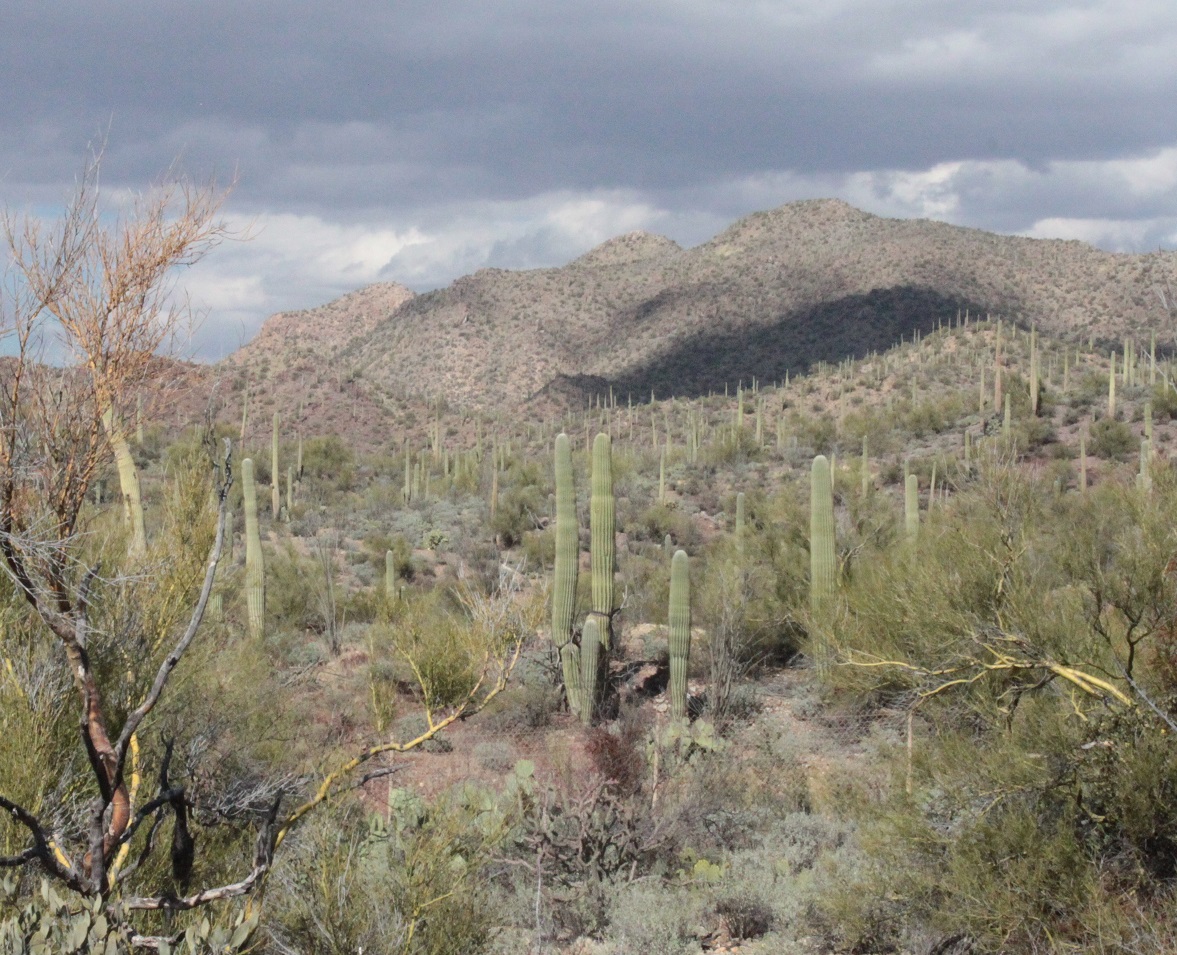
April 27, 2017, by lzzeb
Engaging with the global biogeographic community in the Arizona desert
A blog by Dr Richard Field
The International Biogeography Society (usually known by its unfortunate abbreviation ‘IBS’) is the premier society for biogeographers, and its main, biennial meeting is the crescendo of a two-year cycle that has developed since the first meeting of the society in Mesquite, Nevada in January 2003. Helped by funding from both the School of Geography and the IBS, I went to the biennial meeting of the IBS in Tucson, Arizona, in January 2017. There was a strong contingent from Nottingham Geography, with Adam Algar also going, and several of our PhD students: Joe Bailey, Catherine Waite and Simon Tarr. I suspect we caused consternation, back in the School’s corridors, with our elevated enthusiasm on our return. It is always thus. I was at that first IBS meeting in 2003 and have ensured I go to every one of them since – West Virginia, Tenerife, Merida (Mexico), Crete, Miami, Bayreuth (Germany) and now Tucson. There are perhaps only 5 of us who have been to all 8, and no. 9 is already in my calendar for January 2019 (Malaga). Why is it such a must-go? The reasons are many, and here I reflect on a few selected things that stood out for me in Tucson.
Presenting research and seeing others present theirs is, of course, a core activity for a scientist, and at a conference we see exciting research months or even years before it is published. In Tucson, there were many highlights from the talks and posters; here is just one that made a strong impression on me. Marcia Barbosa, from the University of Evora, Portugal, talked about ‘quantum biogeography’. How to measure the distributions of species – fundamental building blocks of biogeography – has long been debated. Should we use range maps, in which somewhat arbitrary lines are drawn on maps, informed by records of species’ occurrence and expert opinion, and then deem the species to be present on one side of the line and absent on the other? This approach, much used in the past, has been criticised on various grounds, including that the species is certainly not present in all of such a range at any given time. It has tended to fall out of favour, replaced by ‘big data’ approaches in which large numbers of occurrence records are mapped and some form of interpolation then applied. In neither approach is it easy to move between scales, and using occurrence records typically fails to recognise that places currently or recently unoccupied by a species may be appropriate habitat and occupied at some point in the near future.
The ‘quantum approach’ treats the distributions of species like the distributions of quantum particles, the exact locations of which are only known at the moments in time when they are observed. It models distribution as a favourability wave-function that effectively replaces occurrence records with probabilities of occurrence. This all seems to make sense until you stop to think that, using this approach, a presence is no longer a presence. You may go into the field and record the exact location where you definitely see your species of interest, but in the data this becomes less certain: it was only there with a probability of 70%, perhaps. It is almost as though we no longer believe our own eyes! But I am very taken with this approach because it can move us away from simplistic snapshot thinking, instead facilitating a more sophisticated integration of space and time that will surely help us understand the ever-dynamic past and present, and predict the future of biodiversity in a changing world. The case-study evidence presented by Dr Barbosa certainly suggest this. I hope my mathematical ability will prove good enough to allow me to use the quantum approach in my own research.
But a conference is so much more than a research showcase. It is interactive. I talked to Marcia Barbosa about her research over a coffee, as I did with many many others until I could take no more coffee, and then talked some more over beer, food and empty plates. Sleep was the main loser. At conferences we share ideas, form collaborations, avoid dead-ends and inspire each other. Adam and I even returned from Tucson with a new PhD student! (Well, probably; this is not fully signed off yet.) All that is great, and essential for a practising scientist. But the IBS conference has a special significance for me because it is where I can contribute most intensely to the global community in my field. This time it started for me, as in each case since Crete in 2011, with a meeting of the IBS Board. Another followed 3 days later. I have been Secretary of the society for 6 years so far, and it is both a big responsibility and a joy and privilege to work with such a talented group of people, putting our minds to promoting our subject, recognising achievement, fostering new generations of biogeographers and ensuring the long-term continuity of the society. Adam is the UK representative of the IBS. It is wonderful that the University of Nottingham is both so visible on this global stage and plays such a strong part in reaching out to the global community.
It goes further. The IBS runs a journal, Frontiers of Biogeography, and I am Deputy Editor-in-Chief. Markus Eichhorn (School of Life Sciences) is just finishing after several years as the Book Reviews Editor. I am also Deputy Editor-in-Chief of another journal, Global Ecology and Biogeography, which tops the journal league table for Geography (across both human and physical), as it has done for most of the last decade. Adam is an Associate Editor of this journal. Again, this activity ensures that University of Nottingham is very prominent globally in biogeography. Journals and professional societies are essential for science, but professional society board members are legally barred from profiting financially from the role, and most journal editing and review work is unpaid. We do this difficult and demanding work on top of our day-jobs. It is not pure altruism; editors do benefit in various ways, and very many of my discussions in Tucson were related in some way to my journal editing and society Board roles. Even so, a simplistic, selfish, accountancy-driven approach by universities would de-incentivise such vital work, and threaten the very fabric of academia. So I am heartened to see that Nottingham has, in the weeks since my return from Tucson, been consulting on ways to better recognise and perhaps even reward these sorts of external roles, along with a vast range of other contributions to wider society. Indeed, I hope this will be end-result. My work never feels more important than when I am playing a central role in the global development of my subject.
Photos
Of the 10 days I was away, I did manage to get a little way out of Tucson on two of them: on a conference-associated field trip to a nearby mountain, and a day-trip with a Danish colleague (Dr Michael Borregaard) to the Sonoran Desert Museum and Biosphere II.
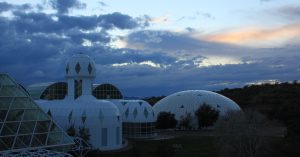
Biosphere II was a famous experiment in sustainability. Now it is a research facility of the University of Arizona
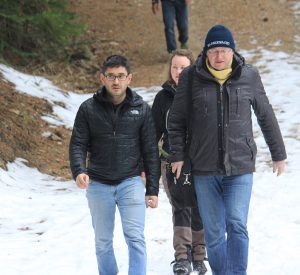
Profs David Nogués-Bravo (University of Copenhagen, Denmark) and Carl Beierkuhnlein (University of Bayreuth, Germany), climbing Mt Lemmon
No comments yet, fill out a comment to be the first

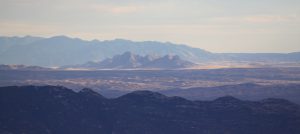
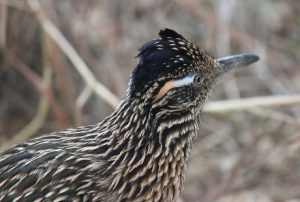
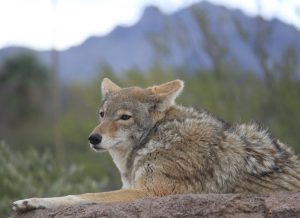
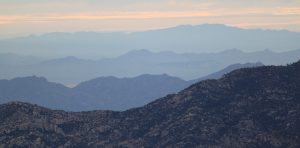
Leave a Reply